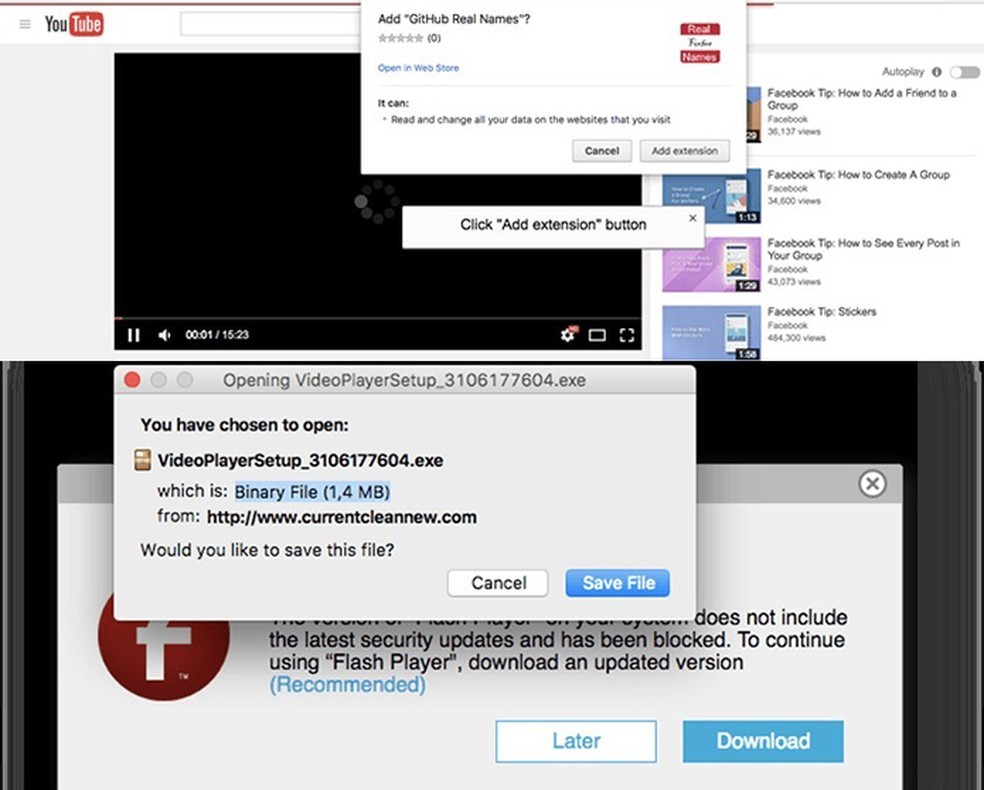Scareware is malicious software on the Internet, with similar objectives to other cyberattacks such as phishing and ransomware. The name, which unites the English term “scare” with “software”, refers to the feeling that the user is involved in when faced with a situation: the apprehension of supposedly having a very dangerous virus on his computer.
The alerts usually come in the form of some notification on your computer – by pop-ups and warnings that often make attention-getting sounds. Usually, this type of notification warns you that your PC is infected with some kind of virus. If the alert then offers a “solution” to the problem in a few clicks, it may be scareware.
What is scareware?
Scareware is a form of malware that aims to infect a user’s computer as soon as they perform a certain action, such as attempting to download some program or click on something specific. The tactic of scareware, which sets it apart from other malicious programs, is to scare the victim into installing the malicious applications.
For example, an aggressive pop-up appears on the screen stating that the computer is infected with a virus that does not exist. After that other banners appear, offering a program that will supposedly destroy this virus. Frightened by the possibility of having the computer infected, the user installs this software, which is the program that will do all the damage.
What are the risks of scareware?
This type of fake program, offered as a solution, can cause some risks to the user in different ways. The main one involves third-party access to personal information such as date of birth, documents, and passwords. In some situations, if the pop-up asks to buy the antivirus, the person will likely give up their financial information in the process. Bank and credit card passwords can also be taken.

Furthermore, the software may install malware on the computer that will “stalk” the user’s actions, such as accessing websites, social networks and exchanging e-mails. With this, scareware can take information to cybercriminals or even spread the malicious program to other users on the network from this access.
How is it different from other types of malware?
What differentiates scareware from other types of malware is primarily the approach. Since they are all malicious software, the end goal tends to be similar: to gain access to and take advantage of a user’s personal information. The difference, therefore, becomes the means to that end.
Adware, for example, presents itself through repeated advertisements to try to “hook” the user, and ransomware, on the other hand, “hijacks” the user’s data and prevents them from accessing it. Meanwhile, scareware uses a kind of psychological game, messing with the victims’ emotions to perform the manipulation.
How to protect yourself from scareware?
There are some ways to prevent scareware, mainly by recognizing some attack patterns. The most striking features of this type of software are aggressive pop-ups, which are often difficult to close and redirect the user to a suspicious site or start a download after a single click.
Still, it is worth paying attention to suspicious e-mails that indicate the performance of “urgent” action and problems in the performance of the computer after downloading some program. Look out for signs such as slow performance, new software appearing that you do not recognize, or even more ads than usual.
What to do if you get infected?
One of the characteristics of scareware is also the difficulty in uninstalling this software. Therefore, if infected, the user should immediately uninstall the downloaded program and, if possible, activate a legitimate antivirus to get rid of the malware. Besides, it is worth updating the browsers used and activating extensions that block pop-ups to prevent the resurgence of the threat.
This post may contain affiliate links, which means that I may receive a commission if you make a purchase using these links. As an Amazon Associate, I earn from qualifying purchases.

